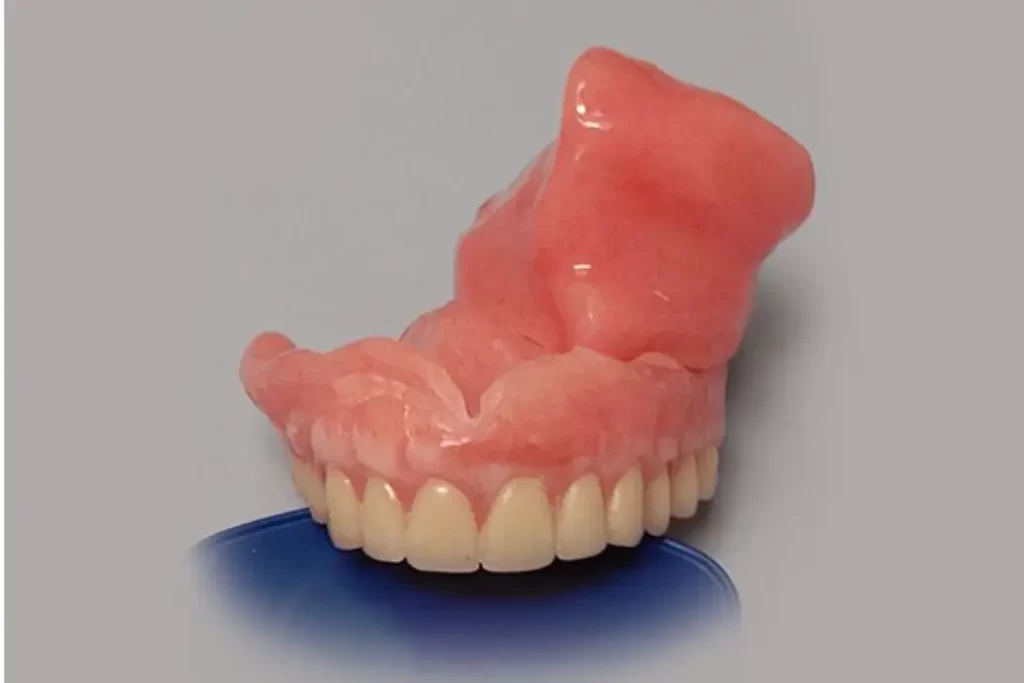Obturators are an integral part of modern dental and maxillofacial procedures aimed at restoring both function and aesthetics after surgery. Whether it’s due to congenital defects, traumatic injuries, or surgical interventions, the loss of facial structures can significantly impact an individual’s quality of life. Obturators play a crucial role in addressing these challenges, allowing patients to regain their ability to speak, chew, and smile with confidence. Obturators play a crucial role in restoring function and aesthetics after surgery. To gain in-depth understanding of their design and fabrication process, consulting a qualified prosthodontist is the reliable source of knowledge on this dental prosthesis.
Types of Obturators
There are two main types of obturators used in dental and maxillofacial rehabilitation:
Removable Obturators
Removable obturators are prosthetic devices that can be taken out and reinserted by the patient. They are often used in cases where the surgical defect is not permanent, such as cleft palate repairs or minor maxillary defects. These obturators are custom-made to fit the patient’s oral cavity comfortably and securely.
Fixed Obturators
Fixed obturators, as the name suggests, are permanently attached to the patient’s remaining dental structures. They are more suitable for patients with extensive maxillary defects resulting from cancer surgery or severe trauma. Fixed obturators offer stability and longevity, making them a preferred option in certain situations.

Benefits of Obturators
The application of obturators provides numerous benefits to patients undergoing post-surgery rehabilitation:
Speech Improvement
Facial defects, particularly those involving the palate, can lead to speech difficulties. Obturators help close the gaps and improve speech clarity, enabling patients to communicate effectively.
Chewing and Swallowing Abilities
Loss of maxillary structures can disrupt normal chewing and swallowing functions. Obturators create a seamless palate that allows patients to chew their food more efficiently and swallow without complications.
Psychological Benefits
Facial disfigurement can have a significant psychological impact on individuals. Obturators contribute to restoring facial aesthetics, boosting self-esteem, and promoting a positive body image.
The Procedure of Obturator Placement
The process of obtaining and placing an obturator involves several essential steps:
Evaluation and Planning
Before proceeding with obturator placement, a thorough evaluation of the patient’s oral and facial structures is conducted. Precise measurements and assessments are made to design a custom obturator that fits perfectly.
Fabrication and Fitting
Using the gathered information, dental professionals create the obturator, considering the materials that best suit the patient’s needs. Once fabricated, the obturator is fitted and adjusted to ensure maximum comfort and functionality.
Adjustment and Follow-up
Regular follow-up appointments are necessary to make any necessary adjustments and ensure the obturator continues to serve its purpose effectively.
Care and Maintenance of Obturators
Proper care of obturators is crucial to ensure their longevity and effectiveness:
Cleaning and Hygiene
Patients should clean their obturators regularly using gentle cleaning solutions recommended by their dental professional. Maintaining good oral hygiene is equally important to prevent any complications.
Regular Check-ups
Routine dental check-ups are essential for patients with obturators. Dental professionals can monitor the obturator’s condition and make any adjustments or replacements as needed.
Alternative Restorative Options
While obturators are highly effective, there are alternative restorative options available:
Dental Implants
For patients with missing teeth, dental implants can be considered as a permanent solution to restore aesthetics and function.
Dentures
Dentures offer an effective option for replacing multiple missing teeth and restoring facial appearance.
Conclusion
Obturators are invaluable tools in the field of dental and maxillofacial rehabilitation. They provide patients with the opportunity to reclaim their lives after facing the challenges of facial defects. With their ability to restore function, speech, and aesthetics, obturators play a vital role in helping individuals regain their confidence and quality of life.
FAQ for Obturators
1. What is an obturator?
An obturator is a dental prosthesis used to restore function and aesthetics in patients who have undergone surgical procedures, such as maxillectomy (removal of all or part of the upper jaw). It is designed to close a defect or gap in the mouth’s hard or soft palate.
2. How does an obturator work?
An obturator is custom-made to fit the patient’s specific oral anatomy. It serves as a prosthetic palate, filling the gap left by surgery, and restores the separation between the oral and nasal cavities. The obturator aids in speech, mastication (chewing), and swallowing, and it can improve the patient’s ability to breathe and prevent nasal regurgitation of fluids.
3. Who needs an obturator?
Patients who have undergone surgical procedures involving the removal of part or all of the upper jaw (maxillectomy) may require an obturator. This includes individuals with oral cancer, certain congenital defects, or traumatic injuries affecting the hard or soft palate.
4. How is an obturator made?
The process begins with an examination and assessment of the patient’s oral cavity. Dental impressions and digital scans are taken to create a precise model of the defect. Using this model, a dental prosthodontist designs and fabricates a custom obturator to fit the patient’s unique anatomy.
5. Is the process of getting an obturator painful?
No, the process of obtaining an obturator is generally not painful. Dental impressions and scans are non-invasive procedures. The insertion of the obturator might feel a bit uncomfortable initially, but it should not cause significant pain. Patients may require some time to adjust to wearing the obturator.
6. How do I care for my obturator?
Proper care and maintenance are essential to ensure the obturator’s longevity and effectiveness. Regularly clean the obturator with a soft toothbrush and mild soap or denture cleaner. Avoid using abrasive materials that could damage the prosthesis. Store it in a clean, dry container when not in use.
7. Can I eat and drink with an obturator?
Yes, an obturator is designed to restore masticatory function. However, it might require some time to adjust to eating and drinking with the prosthesis in place. Initially, start with soft and easily chewable foods, gradually introducing a more regular diet as you become accustomed to the obturator.


